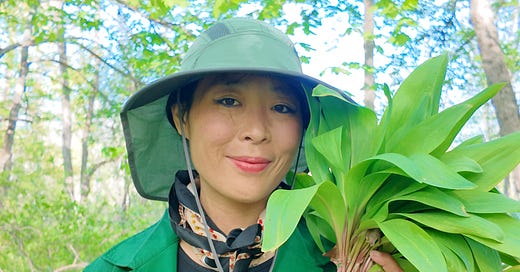Dirt to Dish: My first ramp forage
A behind-the-scenes look at how ramps are foraged, prepped, and protected
Hi friends — I know it’s been a while since I’ve written here. Thanks for your patience and continued support.
Somehow, closing down an era of your business is just as much work—emotionally and physically—as running it. Since March, I’ve been swamped: moving out of our warehouse (packing up 4,000 sq ft of things you’ve collected over 14 years takes a lot of time, but we did it with just us 3 girls!), closing accounts like ConEd and final messages to our customers, planning Earth Month events for corporate clients, and still running our bubble tea kiosk at Pier 57. It's been a lot. I'm still unpacking our things but used ramp season as a little break. And it was as magical, chaotic, and garlic-scented as I had hoped. If you imagined me in a cute outfit, frolicking in a deep green forest holding a basket, with nothing but the noise of bugs and birds, then you’re almost correct.
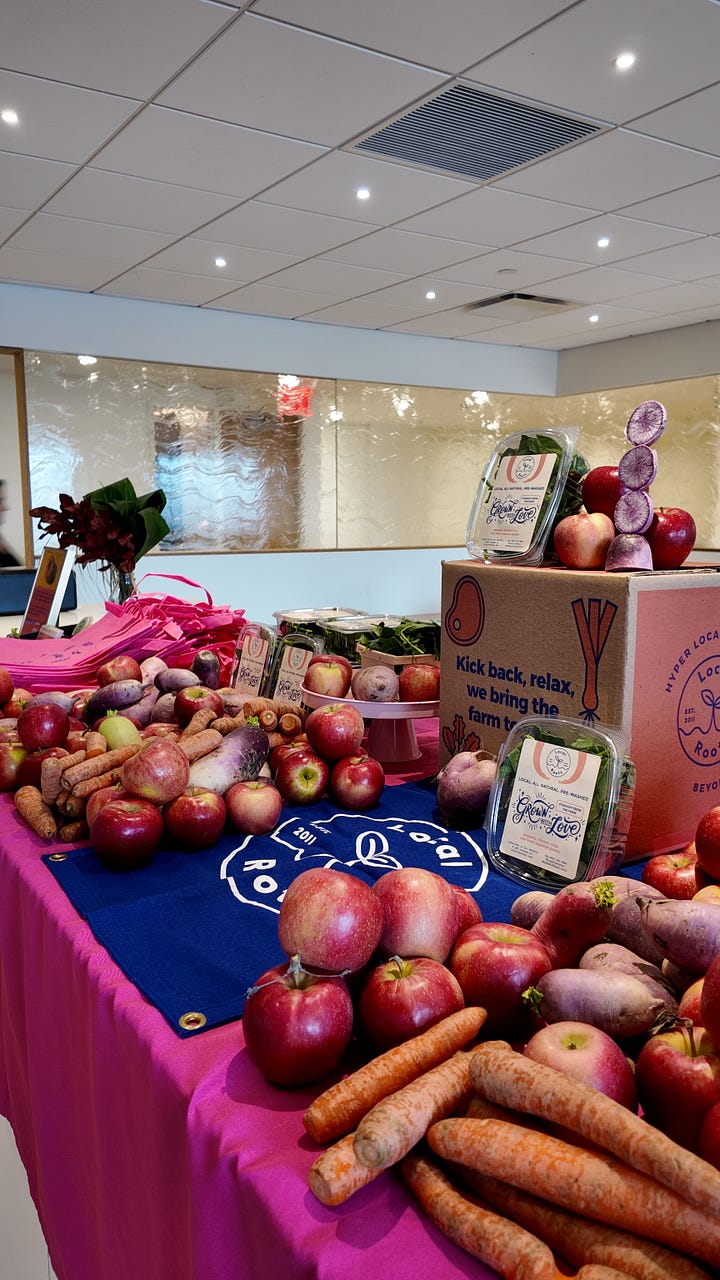

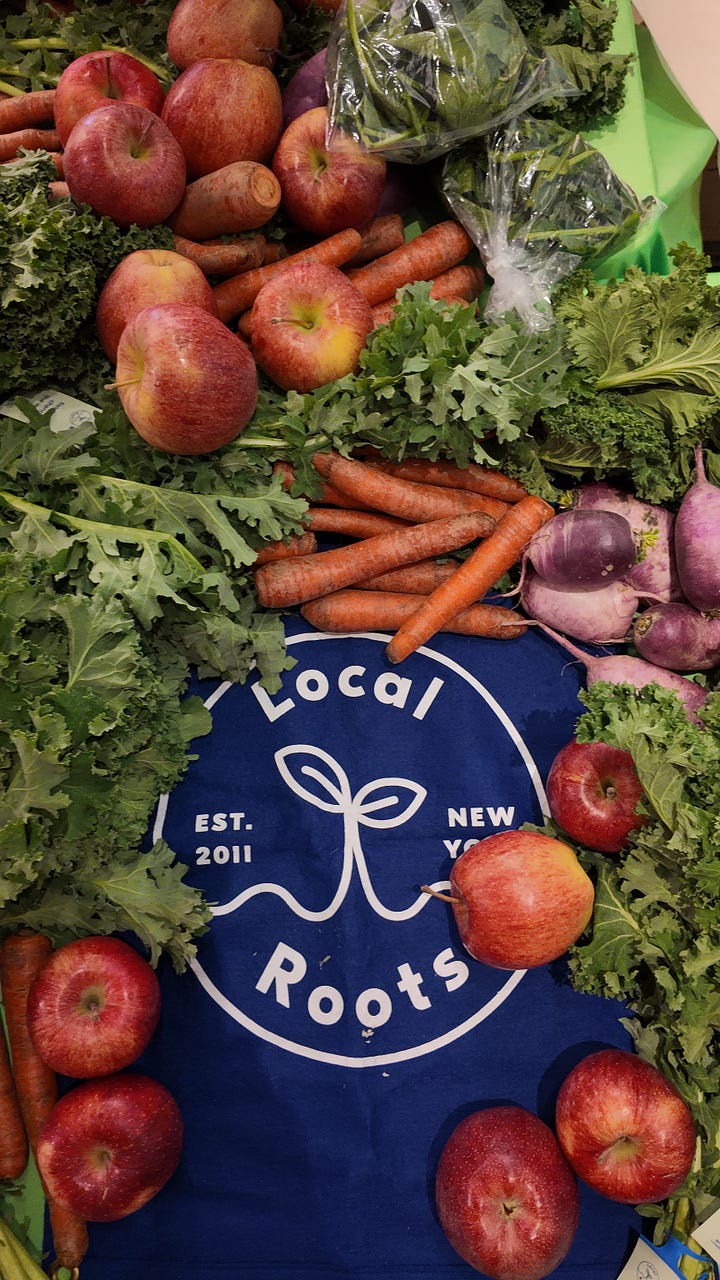
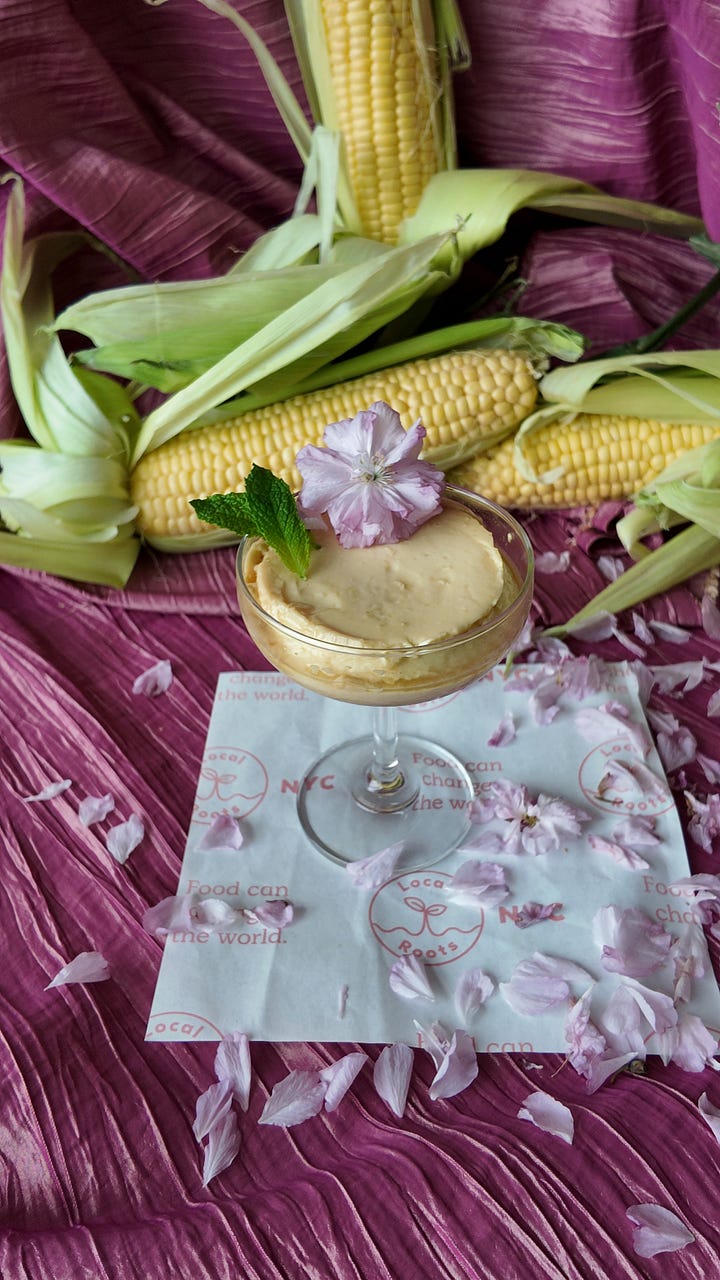
Ramp season is quick and wild. Blink and you miss it. It runs from late April to mid-May, give or take a week or two depending on where you are. And every year, there’s drama. This year? No exception. That’s not included in this article but the next article for paid subscribers will get to hear more about that.
It was my first time actually foraging ramps — not buying them from our usual Catskills forager, but getting my hands dirty. We drove up to the Berkshires to forage on my former employee Zoe’s mom’s house, which felt like a much-needed pause from the chaos of city life and business logistics. Every few days leading up to ramp season, Zoe tracked the status of the ramps so we wouldn’t miss the window — and so we could keep our customers in the loop in case the season started early.
Chef Daniel from Theodora, one of the city’s top restaurants, joined us. They were buying ramps for the restaurant, and he wanted to see the sourcing in action. So we packed the car, drove 3.5 hours, and stepped into a quiet little forest where ramp season was just beginning.

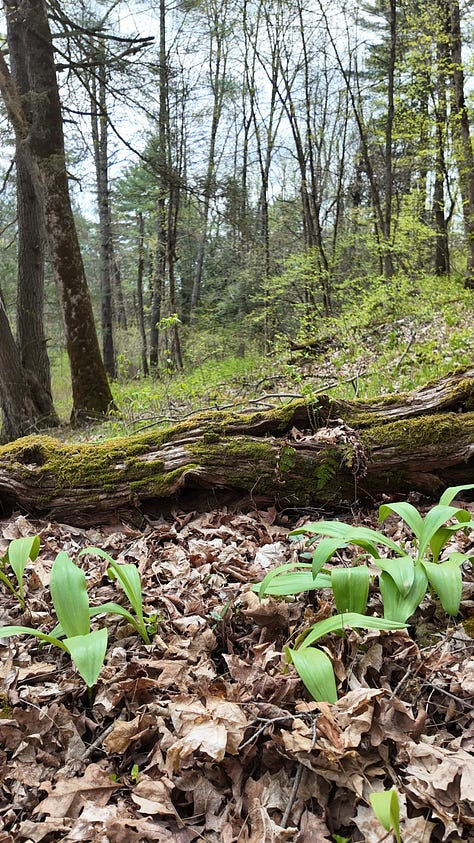
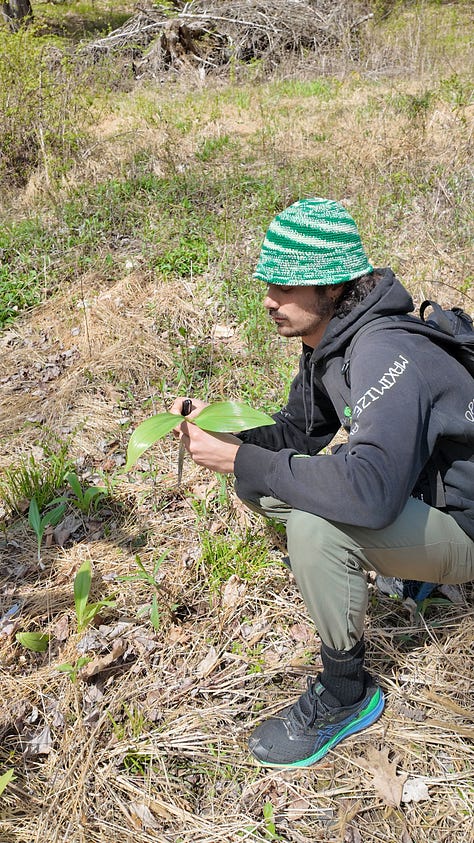
Ramps don’t grow just anywhere — they grow in patches, low to the ground, in shaded forests on the East coast and Canada. Early in the season, they’re not fully mature, so we had to really search and seek out the fully grown ramps that were packed with flavor. And because we harvest responsibly, we couldn't take more than a small percentage from any patch we found.
Here's What I Learned:
Ticks are everywhere. Foraging for ramps can feel like you’re living out a moment in a fairytale, except for the ticks that love to remind you about reality. Spray your shoes, spray your hair, spray your everything. I even wore gloves. I found a ticks crawling around the coolers that were sitting by our car, and even after we got back to the city I sprayed the entire interior of the car and a week later I still found a tick crawling around. They can live for months without a host. YUUUUUCK.
Color doesn’t change flavor — but it does matter. Some ramps have white stems, others deep red or purple. Chef Daniel wanted the red ones for Theodora’s plating. It’s that pop of color that makes a dish sing.
Harvesting is physical. You’re bent over the whole time, snipping or gently pulling full ramps. Will someone create a workout based on squatting in a forest, foraging ramps? Probably.
You need patience. It took an hour to gather just 4 pounds because we were foraging sustainably, only taking about 5-10% from any ramp patch and mostly leaving the bulbs in the ground.
Flavor-wise? Wow. Eating a ramp raw, straight from the ground, hits like a garlicky punch to the face in the best way. And it’s really peppery, almost too hot to handle!
The whole experience felt meditative—quiet forest, occasional birdsong, focused movement. I still find myself scanning the ground, looking for ramps, whenever I’m outside now.
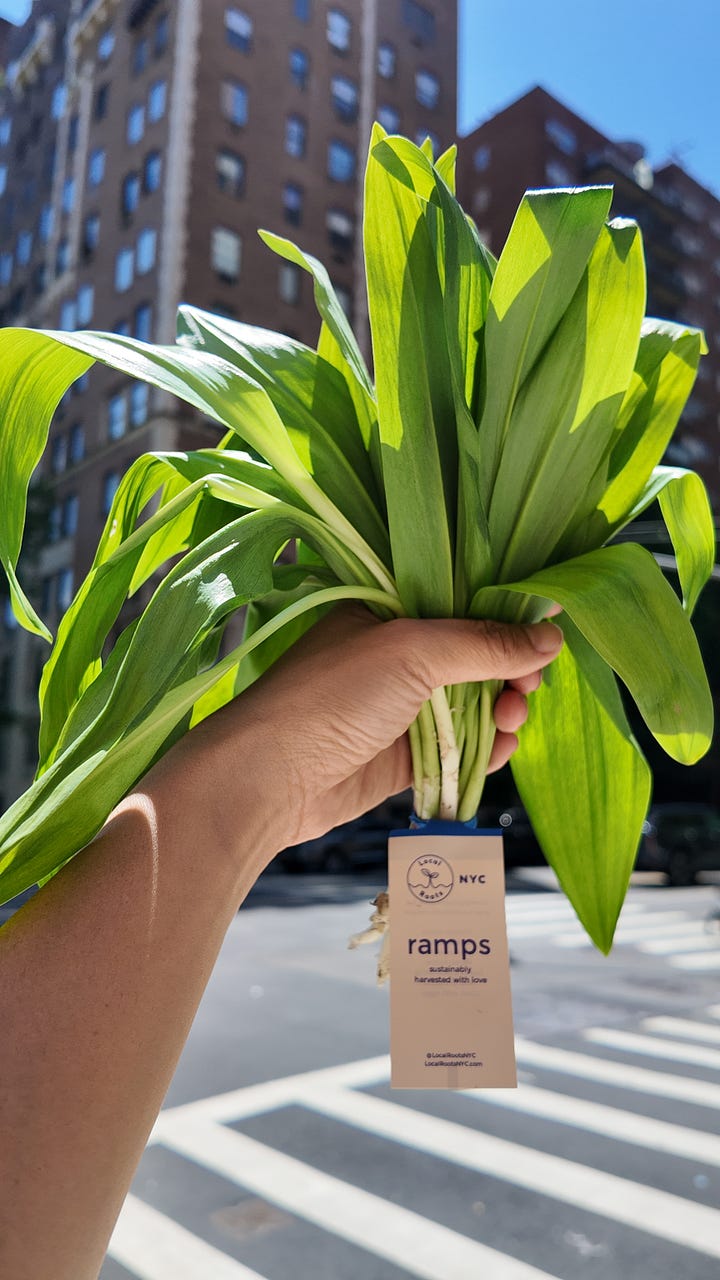

Also, catch a sneak peek of it all in the next episode of Dirty Talk, where I sit in the woods with Chef Daniel to ask him about his spirit vegetable and if he knows what regenerative agriculture is.
The Ramp Chase Continues
That first harvest didn’t give us enough for our restaurant clients and Harvest Club members, so I went back the next week—this time to the Hudson Valley. It was right at the tail end of ramp season, which meant some ramps were ready, but weeds had started to take over. It felt like foraging in a forest version of Jumanji.

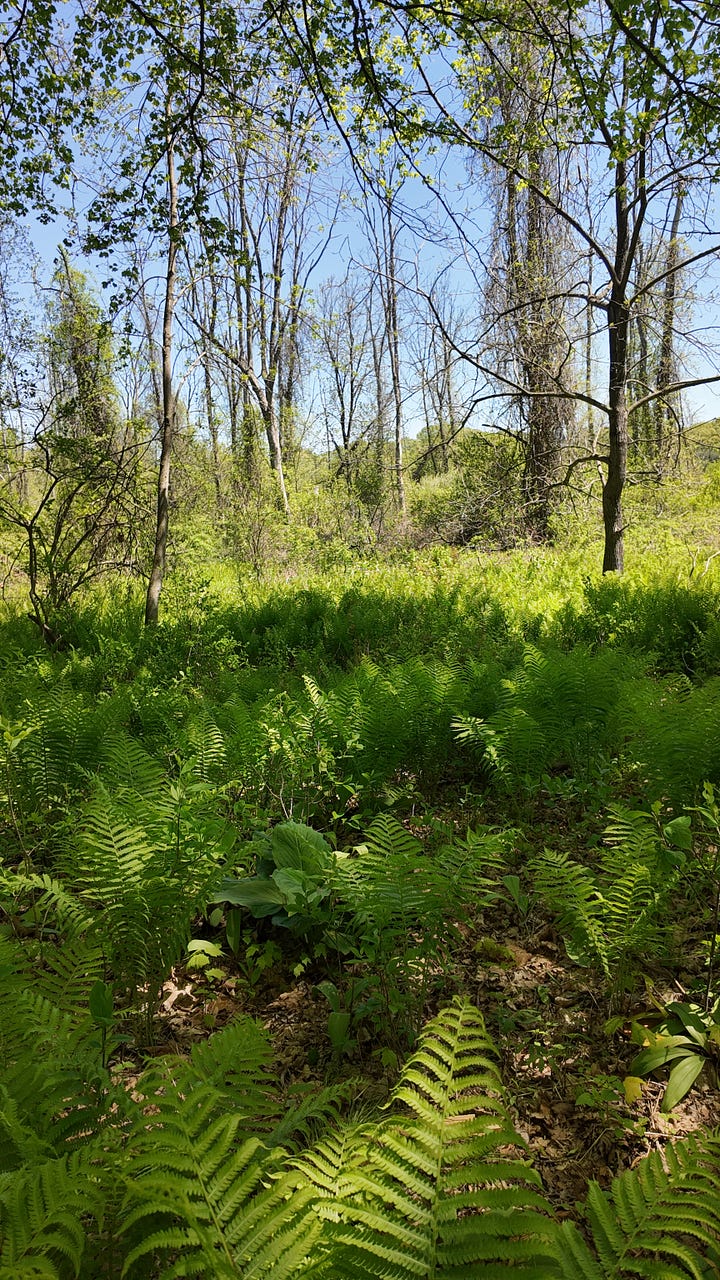
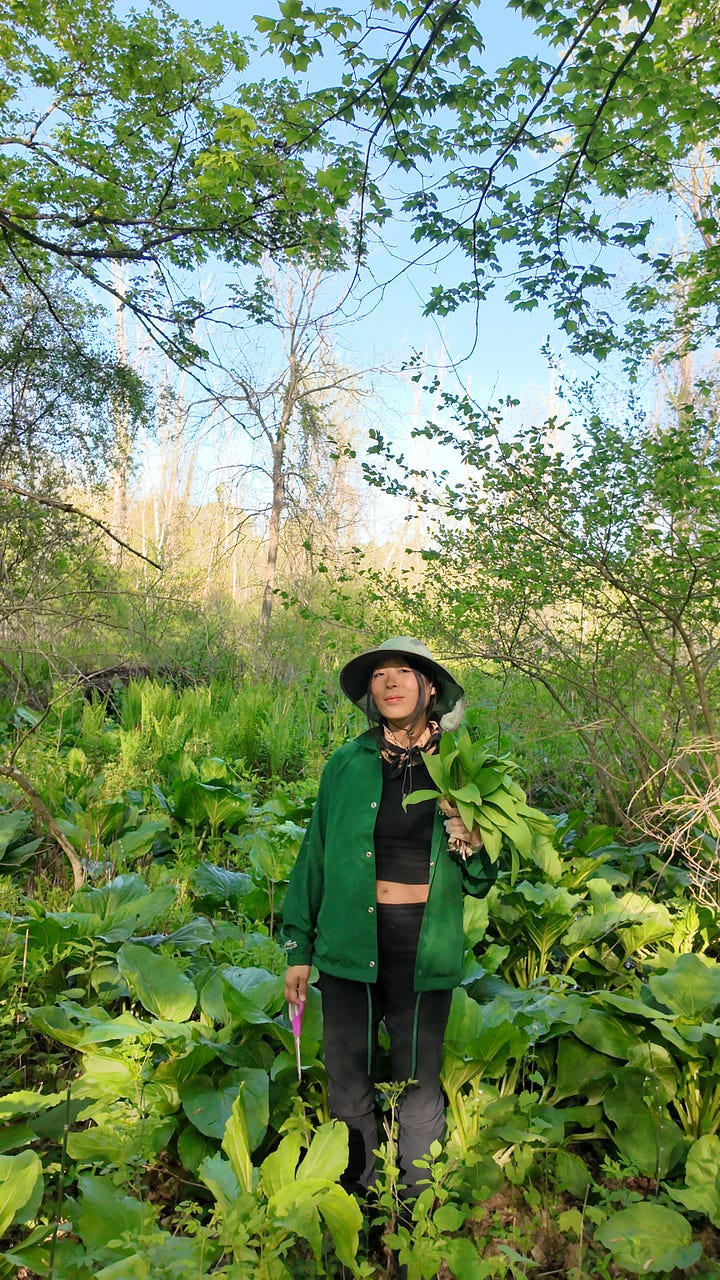

Also: ramps are sensitive AF. I had anxiety the whole ride back, trying to keep them cool and fresh. I took over my friend Laena’s fridge temporarily until I could bring the ramps (transported in coolers) back to NYC the next day. Once back in NYC, I carefully wrapped layers of ramps in dry paper towels stored in a walk-in cooler to make sure they stayed perfect for our customers.
Then Came the Ramp Butter…
After the mud and sweat came the reward: ramp butter and ramp salt. It’s a labor of love, but totally worth it. The kitchen fills with this sharp, intoxicating garlic-onion smell. The color is a vibrant green. You can taste the forest in every spoonful. And washing off the dirt is just a reminder of the dirt that I got to dig my hands into, to forage for my customers. Not a lot of people can experience that.
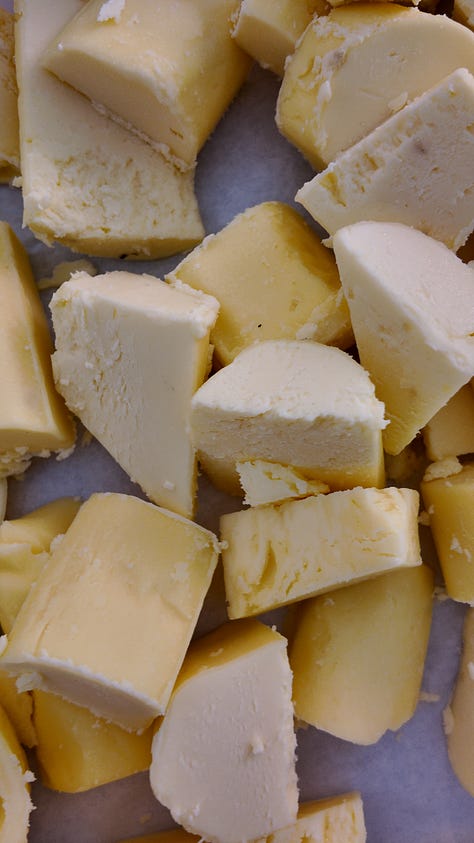
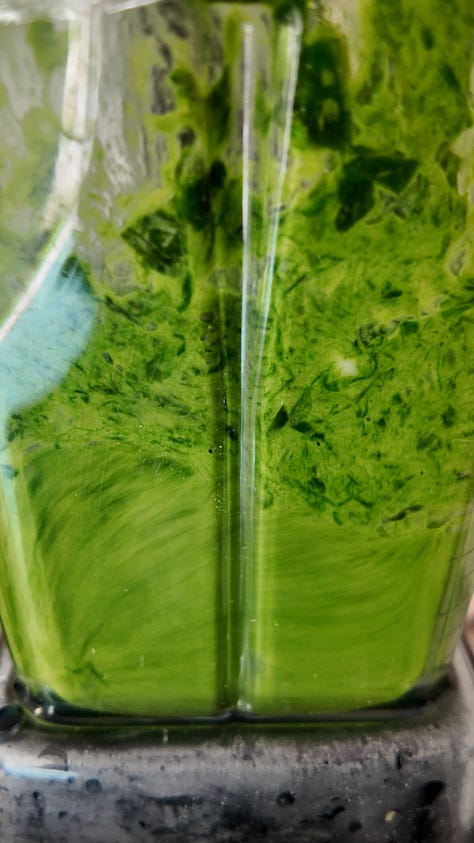
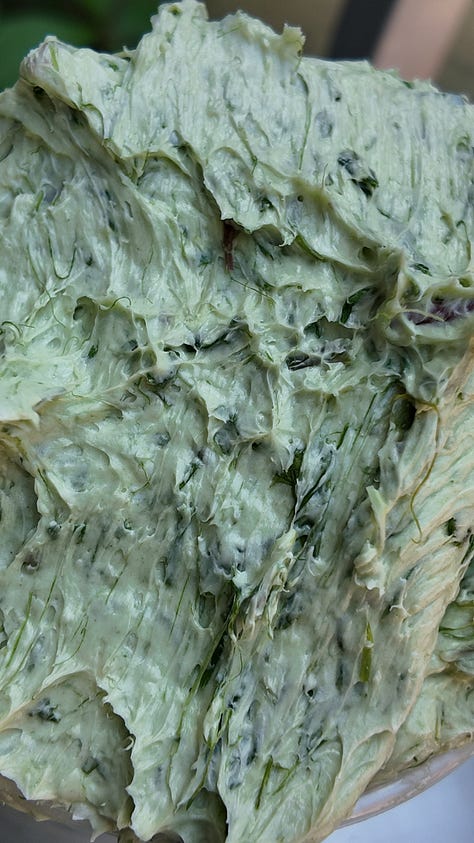
If You’re Foraging, Here's My Advice:
Aim for peak ramp season — not too early, not too late. It would have saved me hours and hours of time, not having to sift through ferns and weeds, or searching for mature ramps.
Respect the land. Harvest sustainably so ramps can come back next year. That means only harvesting 5-10% of the ramps, and/or leaving the bulbs in the ground so they can re-grow the following year.
Bring gloves, bug spray, and patience.
This first forage reminded me why I love seasonal eating—it connects you deeply to place, to timing, to effort. And it made that first bite of ramp butter toast taste even better.
There’s an intense satisfaction in eating something that only exists in front of you because you made it happen—driving to the forest, digging your hands into the dirt, storing, prepping, and handling every step along the way. You remember it with all your senses: the smell of the earth, the scent of ramps still rooted in their forest home, the delicate texture of the leaves, the way the bulbs cling to the soil. You have to really dig in to feel where the ramp ends and the ground begins. The little fiddleheads starting to spring from the ground were a reminder that the seasons were finally shifting — and a fresh crop of vegetables was beginning to peek through the soil on the farms.

